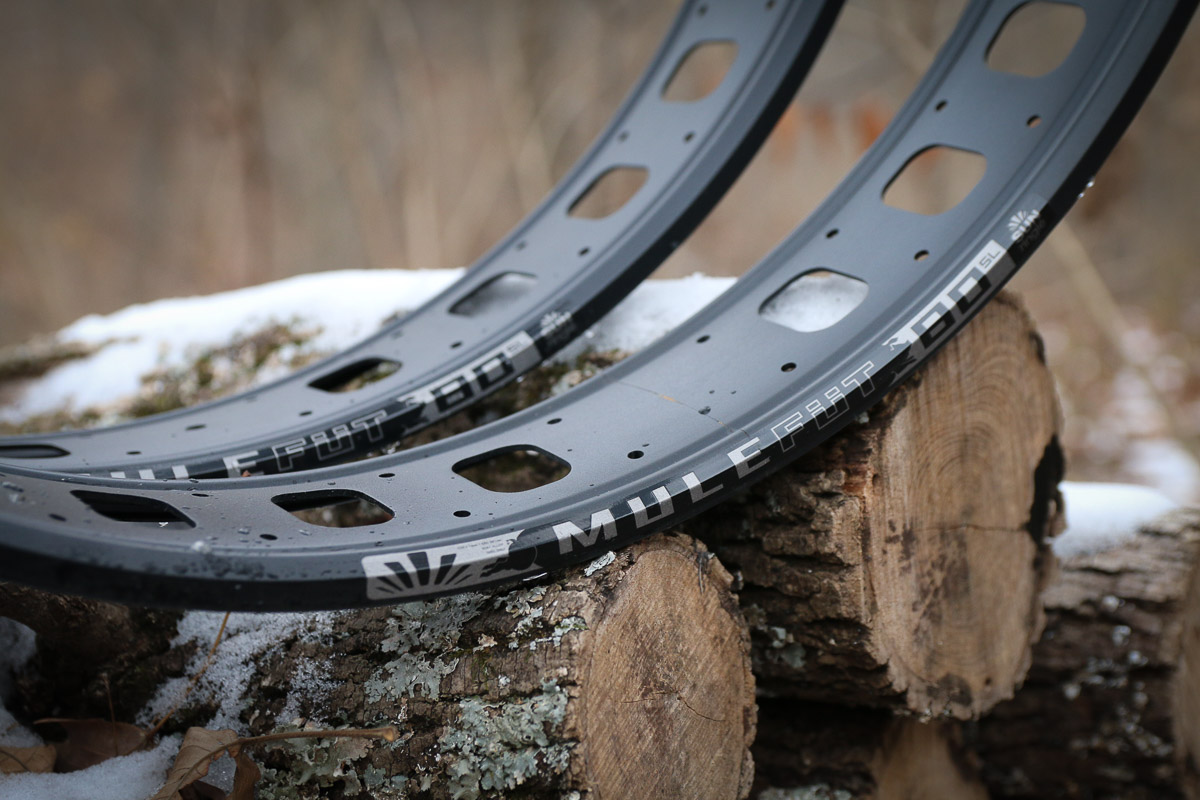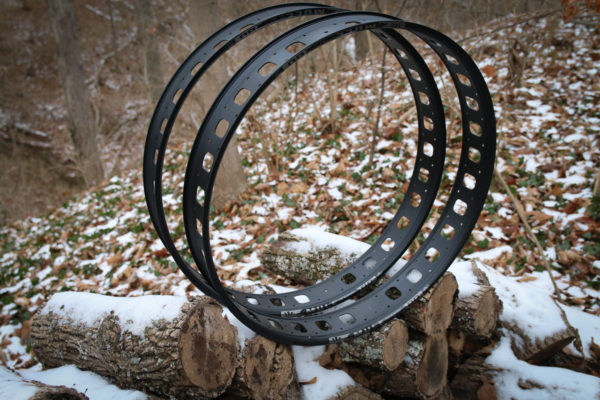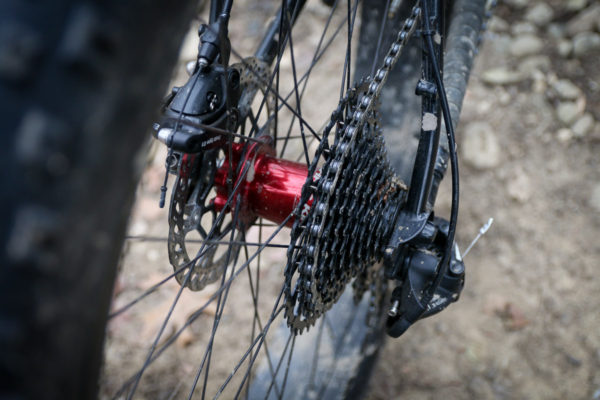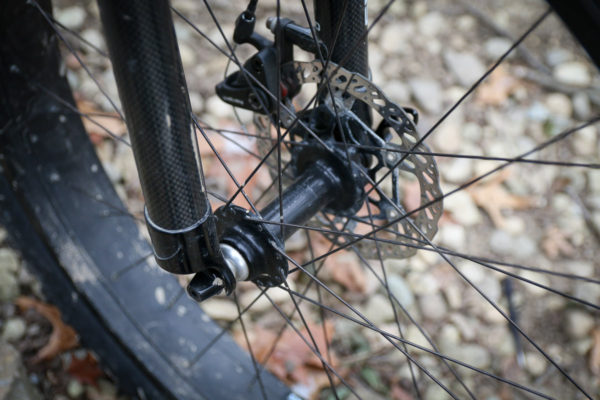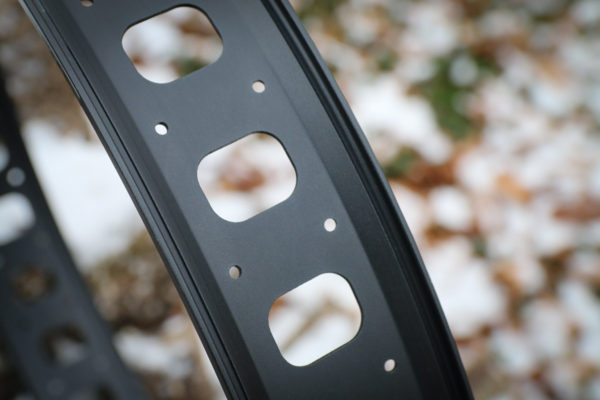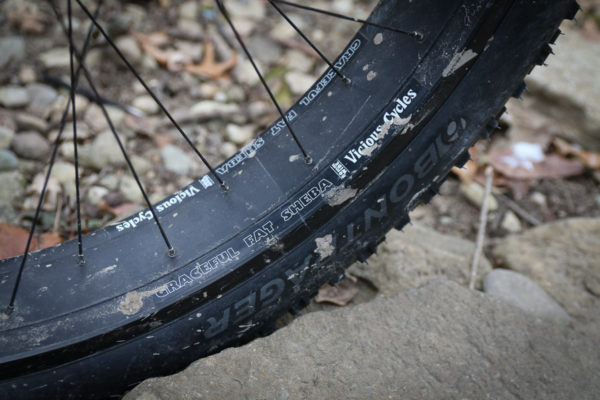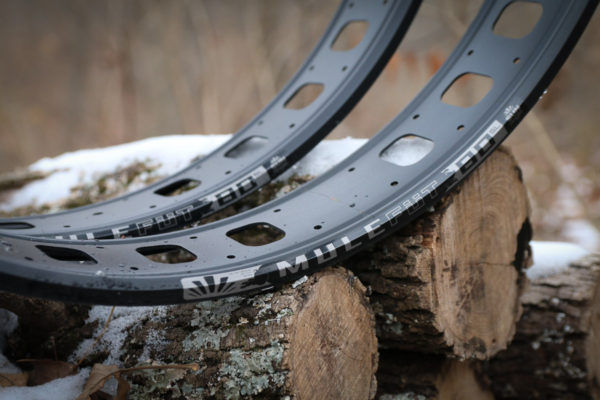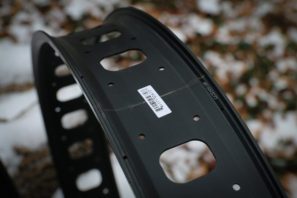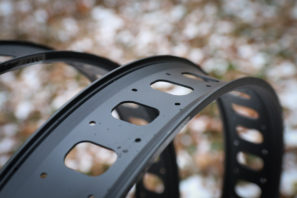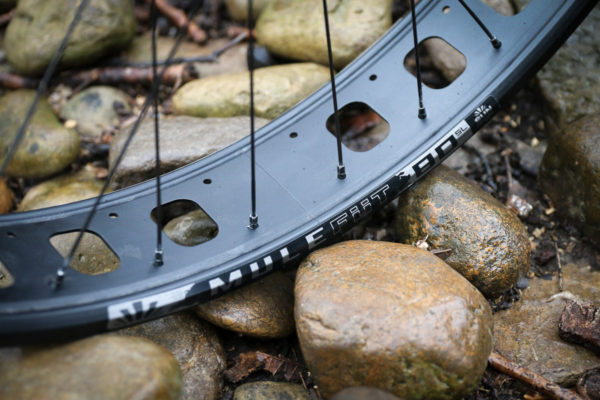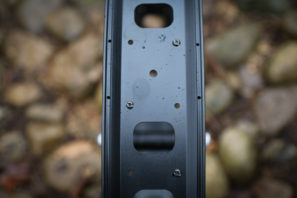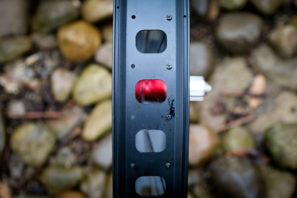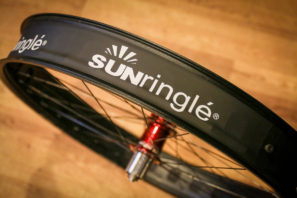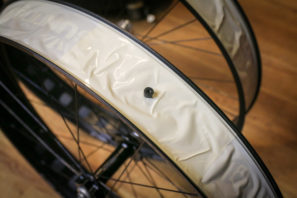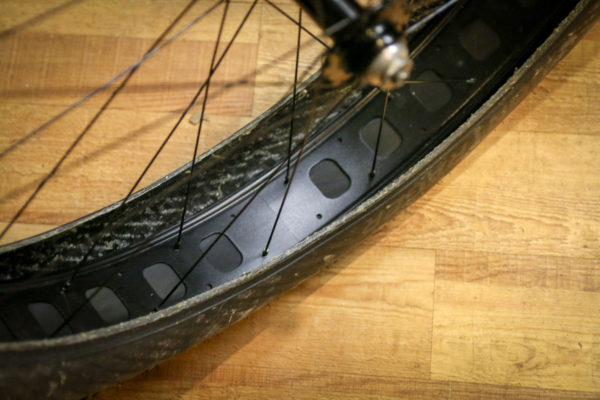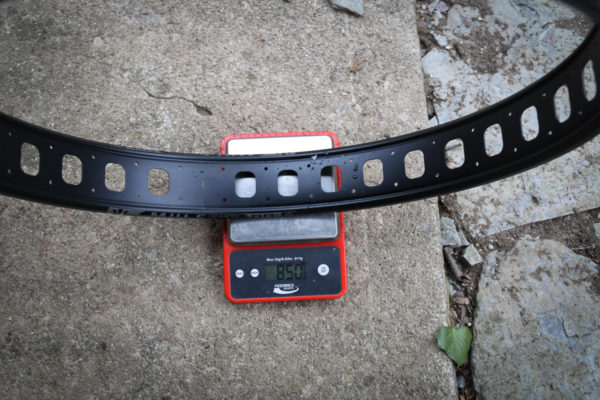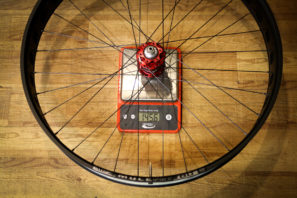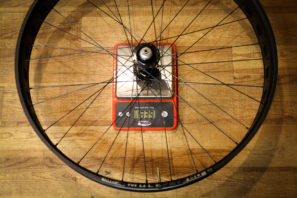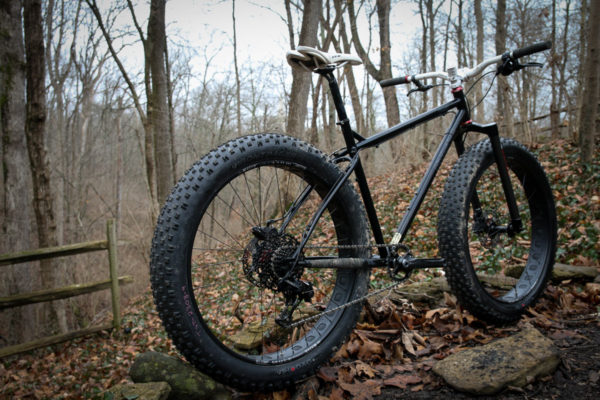It could be argued that the Surley Pugsley is to fat biking, as the Specialized Stumpjumper is to mountain biking. It is far from the first fat bike, but as the first mass produced version it opened up an entirely new segment of riding and played a big part in what fat bikes are today. The modern interpretation of the fat bike has changed drastically since the Pugsley first appeared in 2005, and the bike is now only sold as a frame set, but the bike still delivers the fat bike experience – even with its quirky offset design.
Which is why when it came time to decide what to do with my Pugsley Necromancer, I couldn’t force myself to get rid of it. You see, my personal Pugsley has essentially become my loaner fat bike. With up to four fat bikes on hand for various testing at most times, when conditions are good and friends want to ride – it’s there. However, due to the time frame that I built up my Pugsley (and my limited funds), I settled for the Vicious Graceful Fat Sheeba rims which did the trick, but were definitely not tubeless compatible. That turns out to be pretty important for a loaner, and after having it come back with flat tires way too many times, I decided it was time to lace up some new rims…
The same thing that made the Pugsley work with such wide rims and tires, also makes it a bit challenging to find compatible wheels. Back in 2005, “fatbike width” hubs of 170/177 or 190/197 didn’t really exist, so rather than creating a new standard for a bike that may or may not take off, Surly built the frame with an offset rear end. That allowed the standard 135mm width hub to act as if it were 170mm because it was offset to the driveside by 35mm. The rims then used an offset drilling pattern that pushed the rim to the non-drive side, and the component balancing resulted in a centered tire with clearance for 4″ rubber and 80mm rims.
In the beginning, the Pugsley frames also used an offset front fork with the idea being that you could swap the front and rear wheels if need be. Most of us never needed to swap from a geared rear wheel to a fixed, and eventually the offset front spacing gave way to centered front spacing. But fat biking was still in its relative infancy so the compatibility issues didn’t stop there. While the offset changed for a stronger wheel build, many companies kept the rear caliper spacing (on the front forks) in order to continue the use of rear hubs up front. Since building front forks to fit rear hubs in a centered configuration didn’t make a lot of sense, 135mm front hubs with front disc brake spacing started popping up, and about that time we got in the White Brothers (now MRP) SnowPack fork to review. To go along with the front rotor spacing, Paul Components sent over their WHUB front hub.
Now, years later I found myself with a Chris King ISO Disc 135mm rear and a Paul Components WHUB front hub in nearly perfect condition, but they were built to rims that had to go. With offset fat bike wheels falling out of favor, there aren’t a ton of options out there for high quality, tubeless ready rims that are drilled with 64 holes. Surly offers their own in the My Other Brother Darryl, but in this case I went with the Sun Ringle Mulefut 80 SLs. I’ve been pretty happy with their performance on a number of test bikes, and on my own set of Mulefut 50’s, so it seemed like a logical choice.
The Graceful Fat Sheebas remained round and flat spot free for years, but when it came to a tubeless conversion, they were hopeless. After 4 layers of Gorilla tape, tubeless tires still wouldn’t come close to seating, and I need to be able to replace tires relatively quickly so new rims were the only answer.
The Sun Ringle Mulefut 80 SL rims are very low profile, but they still include two small box sections built into the shoulders of the rim to increase rigidity. Measuring 80mm wide and 74.4mm internally, the 26″ fat bike rims use a pinned joint and a dual row 64 hole drilling around the large cutouts. What really attracted me to these rims is their STR Tubeless Ready profile which uses aggressive bead humps and a tight bead seat to ensure that the tire stays put even at super low pressures. For wheel builders, the spoke hole offset is 19mm with an ERD of 551. The retail price is $170 per rim, but you can probably find them for less.
If you’re not familiar with the 64 hole wheel build, in the case of offset wheels only the 32 spoke holes on one side of the rim are used. On centered builds with the same rim, the spokes are staggered from one side to another for a stronger build.
In order to make such a holey rim tubeless, a reinforced STR tubeless rim strip is first installed, followed by one layer of STR tubeless tape. Pro tip: when installing the rim strip, you can use the valve stem to line up the hole on the rim strip with the hole on the rim. This is important because the strip is extremely tight and if they aren’t aligned when you get the strip on the rim, you’re going to have a bad time. Just remember to remove the valve after the strip is installed, before you install the tubeless tape. Also, I’ve heard a lot of comments about struggling to get the tire installed onto the rim which is true if you try a traditional method. Best practice is to put the wheel inside the tire and work from the outside in.
After everything was installed and sealant was added, the wheels and tires did exactly what they should – sealed up first try, without leaking. The only time I’ve ever noticed leaking from Mulefuts was caused by the valve being too loose, so you may have to resort to methods other than your fingers to tighten the nut if that’s the case.
This wheelset is never going to win a lightness award, but neither is the Pugsley. The rims themselves come in at 850g, and the wheels built with brass nipples, Wheelsmith 14/15 DB spokes, and with rim strips, tape, and valves installed come in at 1339g for the front, and 1456g for the rear. The trade off? This build dropped almost a pound per wheel, and finally got my Pugsley under the 30lb mark.
Truthfully, what started out as a way to simply keep me from buying and patching so many fat bike inner tubes has turned into a reminder of how much I like this bike. Sure, at this point there are better fat bikes out there, but the Pugsley will always be one of a kind.
